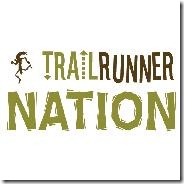In Chapter 4 of Tread Lightly, my co-author Bill Katovsky covers the history of human footwear use, and describes the evolution of the running shoe. An essential resource for the writing of this chapter is a 1980 book aptly titled “The Running Shoe Book.” Written by Peter Cavanagh, a scientist who has contributed more than just about anyone to our understanding of running biomechanics, the book covers many of the topics we touch on in our own book, but from the viewpoint of someone looking at the topics over three decades ago. It’s a wonderful read if you can find a used copy (you can usually find some on Amazon at a reasonable price) – easily one of the most fascinating and informative books that I own.
In the second chapter of his book, Cavanagh describes footwear history, as well as the history of running shoe up to 1980. One of the most interesting bits in the chapter is a description and photo of what Cavanagh believes to be the first specialized running shoes ever made. Here’s what he writes about it:
“One of the most exciting finds during my own search of museums was made in Northampton – the center of the British shoemaking industry from early times.
Beautifully made, and extremely well preserved, the shoe in Figure 2.7 was displayed in a glass case, labeled “Running Shoe – possibly belonged to Lord Spencer c. 1865.” It is likely that this shoe represents the earliest spiked running shoe made on a production basis.
——-
The Spencer shoe bears a definite relationship to early cricket shoes. The low cut design is of all leather construction but is nevertheless extremely light at 280 grams. There are three spikes under the forefoot and one under the heel, suggesting that the shoe was used as a distance running or cross-country shoe. It incorporates a broad toe band, which is a separate piece of leather, sewn into the welt of the shoe to add lateral stability.
My own view of the Spencer shoe is that it pinpoints the first branch in the evolution of running shoes. From 1865 on, specialized shoes for running turn away from street shoes to form their own line of evolution.”
What did the shoe look like? Below is the photo that Cavanagh includes in his book – looks like Bill Bowerman can’t be blamed for inventing the heeled running shoe after all!

















There’s this lovely Britishness to them. Did they come with a running 3 piece suit?
Those look like the shoes I wear to work. Well, minus the spikes, that is.
Very cool stuff Pete. Those actually look hilarious.
Did Lord Spencer play golf? These look much more like golf shoes than running shoes.
although bowerman isn’t responsible for heeled running, i’d say more of cushioned crap, as for heels…it’s all fashions fault, i hate fashion, and nike…
You’d like Chapter 3 of my book – lots of great old quotes about how “almighty fashion” screwed up our shoes :)
Sent from my iPad
Church’s is the big shoe company in Northampton (I visited on a rugby referee exchange). This is nothing more than a dress shoe with spikes, obviously. All running at the time was cross-country racing style, and there was no asphalt. This would be no different than me putting golf spikes on my Florshiem’s. Running shoes had to start somewhere!
I think what I find most informative is that casual/dress shoes that gave rise to this “running shoe” had big heels, so it’s been an awful long tie since flat shoes were the norm for all day wear among the more affluent society.
Sent from my iPad
I don’t believe that dress shoes really gave rise to running shoes especially when you take a look at statistical quantity of people running the Boston marathon from the time around 1870 to now, you can see how with running only a handful (literally maybe ten people) ran actually and at that time they were most likely using the plimsoll athletic shoe which was producing shoes since 1830s and used a predominantly rubber base which made running or walking around silent hence the american name “sneakers”. Bill is still most likely the one to attribute the trend of heel offset in running shoes. Also the shoe you have on photo was designed for the popular sport at the time known as Pedestrianism or long distance walking.